Supportive Sneakers for Toddlers – Improve Your Toddler’s Foot Posture and Balance
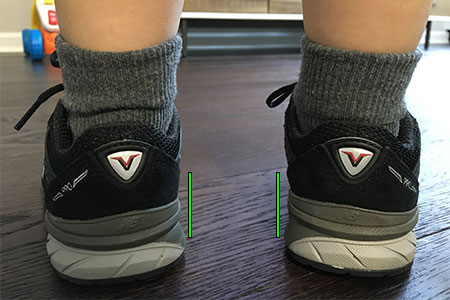
Has your toddler been diagnosed with a foot condition like flat feet, toe walking, in-toeing, out-toeing, or low muscle tone? Has your medical professional recommended supportive shoes but left you unsure about which specific styles to choose? Finding the right footwear is critical to your toddler’s healthy foot development—just like a strong foundation is key to a stable home. As an experienced and passionate children’s shoe fitter, I specialize in helping parents find the best supportive sneakers for toddlers with foot conditions, and I’m confident I can help guide you to the right choice.
What Are the Most Common Foot Problems in Toddlers?
Several pediatric podiatrists refer families to the shoe store where I work to ensure children are properly fitted for supportive shoes—and, when needed, orthotics. Common concerns include flat feet, in-toeing, out-toeing, and toe walking. While some of these issues, like flat feet, can be part of normal development, they may also require closer attention and the right footwear for healthy growth.
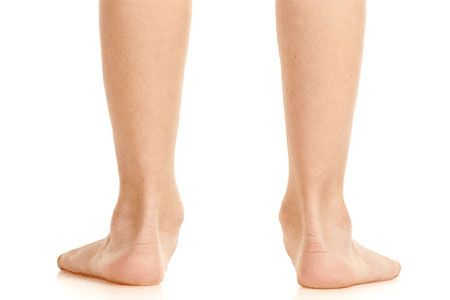
It’s perfectly normal for toddlers to have flat feet—many don’t develop arches until around age five. However, not all flat feet are alike. If your medical professional recommended supportive sneakers, it’s likely because your toddler’s flat feet or overpronation is more moderate to severe and could benefit from extra stability and structure during early development.
The Importance of Taking Early Action – Be Proactive!
Proactive measures can help manage or correct many common foot issues, and part of that arsenal includes choosing the right footwear. The perfect pair of sneakers can be a game-changer, offering the needed support to promote healthy foot growth and function. Let’s take a look at a couple of images for better visualization purposes.
Before and After Images
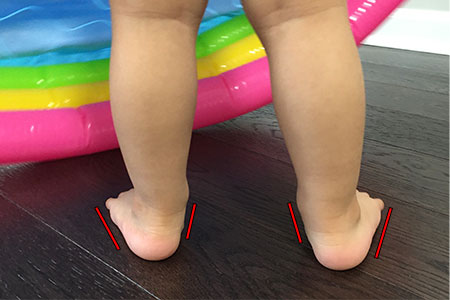

Let’s take a look at another example of a toddler with flat feet standing barefoot and then wearing supportive shoes.

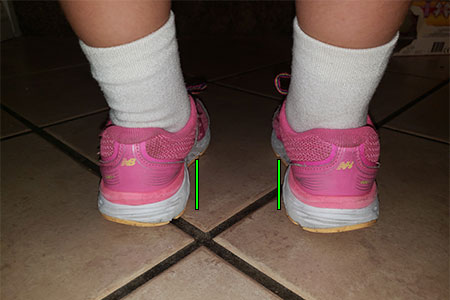
It’s truly incredible how much of a difference the right pair of supportive shoes can make—transforming comfort, stability, and even the way your child walks!
What Shoe Brands Are Reliable for Toddlers with Foot Problems?
I don’t like to recommend specific shoe brands as some parents assume that all shoes from that specific shoe brand will be appropriate for their toddler’s feet. With that said, my shoe recommendations feature shoes from New Balance, Memo, Stride Rite and Saucony. Their range of toddler sneakers is lauded for sturdy heel counters and cushioned insoles, but not all of their styles provide the same levels of support.
The Role of Supportive Sneakers in Managing Toddler Foot Issues
Let’s break down what goes into making a sneaker “supportive”.
1. Firm Heel Counter: This part of the shoe provides rearfoot stability and helps improve your toddler’s foot posture and walking gait. How can you check if your toddler’s shoes provide a firm heel counter? Grab your toddler’s shoes and press on the back to make sure the heel counter feels firm and sturdy.
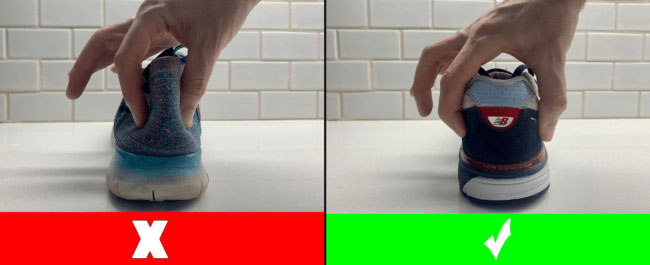
2. Sturdy Outsole: This is the part of the shoe that provides a stable base of support and helps improve your toddler’s foot posture and stability. How can you check if your toddler’s shoes provide a sturdy outsole? Grab your toddler’s shoes and press on the middle part of the shoe and make sure it feels firm and that it doesn’t bend as shown in the image below.
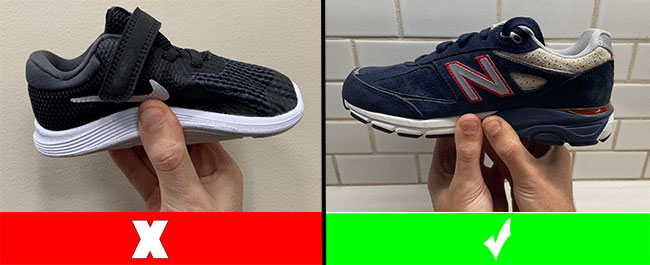
3. Flexible Forefoot for Ease of Movement: This feature is crucial as your toddler’s shoes must be supportive but lightweight and flexible at the same time. How can you check if your toddler’s shoes provide the correct amount of flexibility? Your toddler’s shoes should bend at the toes but no further.
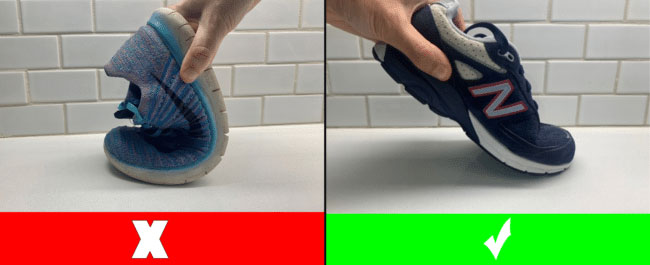
Stay Away From Shoes with Memory Foam Insoles
Some parents assume that memory foam insoles can help with their toddler’s foot conditions, but this is a common misconception. While memory foam may feel soft and cushy, it’s designed purely for comfort—not support—and won’t address underlying issues like flat feet or poor alignment.
The first seven years of life are crucial for a child’s foot development. During this period, known as the “golden years of treatment opportunity,” permanent structural changes to the foot and lower extremities are more easily achieved. Proper footwear can play a significant role in promoting healthy foot development and preventing future issues. Disclosure: Some links may be affiliate links, meaning we earn a small commission at no extra cost to you.
Best Supportive Sneakers for Toddlers with Foot Problems
As a shoe fitter with years of experience, I have compiled a list of my top recommendations for supportive toddler sneakers in 2025. These options prioritize support, comfort, and durability, ensuring your child’s feet remain healthy and happy.
1. Shoe Style 990v6 by New Balance
These supportive toddler shoes provide a robust outsole that helps distribute weight evenly across the foot and reduces strain on the muscles and joints. The downside that many parents complain about is the high price tag.
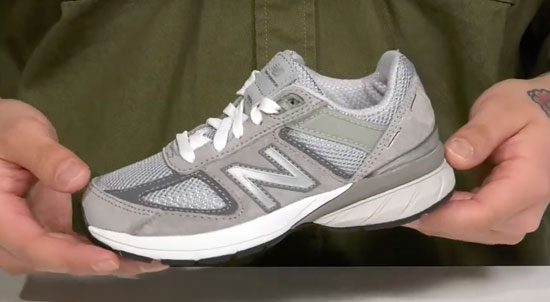
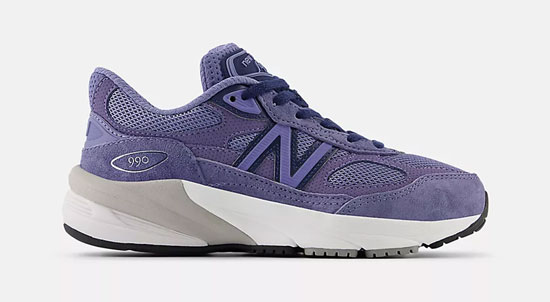

Key Features
- You can order the 990v6 with laces on the New Balance website, Amazon, or Zappos
- Available in medium, wide, and extra wide widths
- Also available in pink and navy blue
- There is also a Velcro version of these shoes available in navy blue and pink
- Ideal for treating foot conditions such as flat feet, low muscle tone, toe-walking, and in-toeing
- I suggest getting this shoe a half size larger than your toddler’s current foot size
2. Shoe Style Gabi by Memo (Orthopedic Shoe)
These orthopedic shoes are ideal for toddlers with foot problems as they are specifically designed to improve foot posture and comfort. The higher price point is a common complaint parents have but the investment in orthopedic shoes is often justified by their specialized design and effectiveness in addressing flat feet.
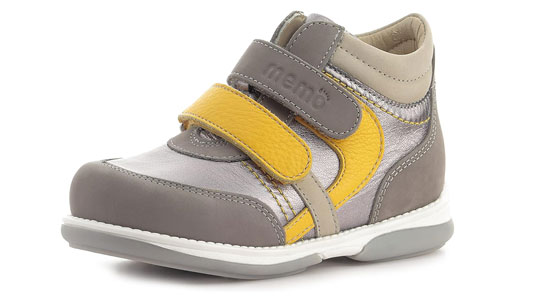
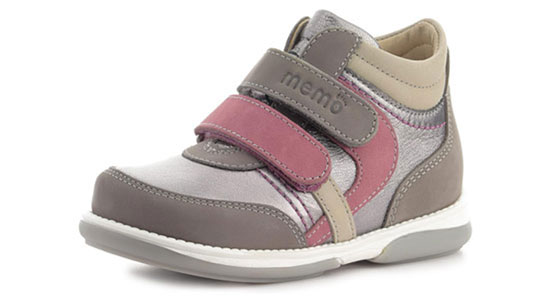
Key Features
- You can order the shoe style Gabi by Memo on Amazon
- Fits medium and wide feet
- Also available in a Mary Jane style
- Ideal for treating foot conditions such as flat feet, low muscle tone, toe-walking, and in-toeing
- I suggest getting this shoe a half size larger than your toddler’s current foot size
3. Shoe Style Elliott by Stride Rite
These Stride Rite ankle support shoes offer excellent support and a comfortable fit, making them a top choice for toddlers with foot problems. This shoe is affordable and despite the limited color choices, the Elliott shoes are celebrated for their supportive qualities and comfortable fit.
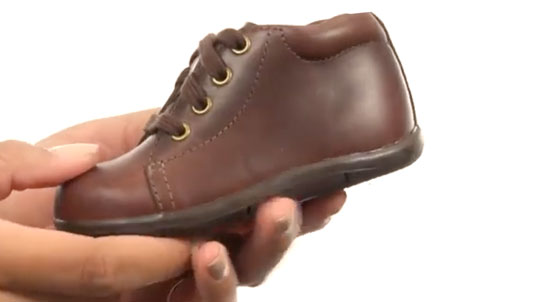

Key Features
- You can order the shoe style SRT Elliot by Stride Rite on Amazon or Zappos
- Available in medium, wide, and extra wide widths
- Ideal for treating foot conditions such as flat feet, low muscle tone, toe-walking, and in-toeing
- I suggest getting this shoe a whole size larger than your toddler’s current foot size
4. Shoe style 574 by New Balance
This New Balance shoe combines style with functionality. It offers solid support and cushioning, making it suitable for toddlers with flat feet and overpronation. The shoe is offered at a lower price point.
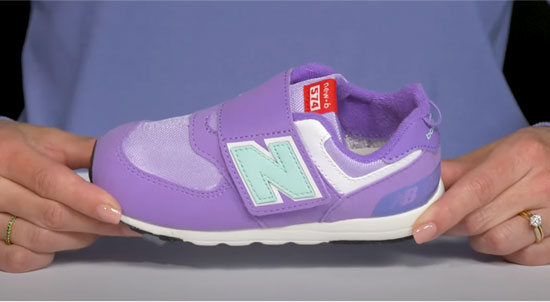

Key Features
- Order the shoe style 574 New-b V1 by New Balance on Amazon or the New Balance website
- Available in medium, wide, and extra wide widths
- Ideal for treating foot conditions such as flat feet, low muscle tone, toe-walking, and in-toeing
- I suggest getting this shoe a half size larger than your toddler’s current foot size
5. Shoe Style Tracks by Timberland
These high top ankle support shoes provide a sturdy design that ensures toddlers can enjoy outdoor activities without compromising on foot stability or comfort, but this style is slightly heavier than my other shoe recommendations.

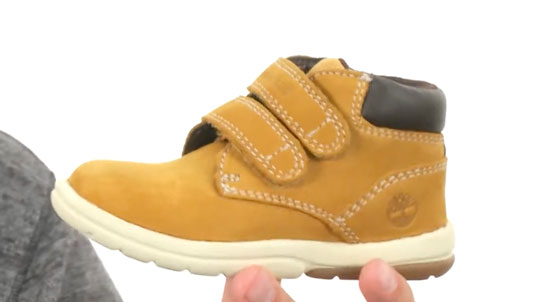
Key Features
- Order the shoe style Tracks by Timberland on Zappos or Amazon
- Fits medium and wide feet
- Water-friendly
- Ideal for treating foot conditions such as flat feet and toe-walking
- I suggest getting this shoe a whole size larger than your toddler’s current foot size
6. Shoe Style Fresh Foam Arishi v4 by New Balance
These New balance support shoes provide a soft and comfortable fit while supporting your toddler’s feet. Families appreciate how this shoe is offered at a very reasonable price.

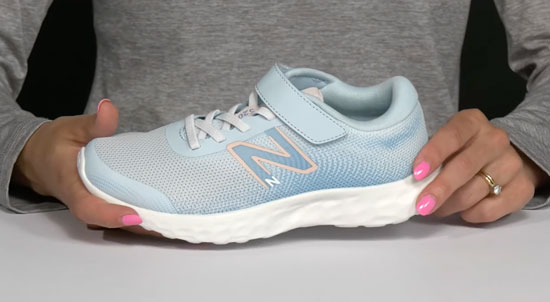
Key Features
- Order the shoe style Fresh Foam 650 by New Balance on the New Balance website or Amazon
- Available in medium, wide, and extra wide widths
- Ideal for treating foot conditions such as flat feet, low muscle tone, toe-walking, and in-toeing
- I suggest getting this shoe a whole size larger than your toddler’s current foot size
7. Shoe Style 2002 by New Balance
These supportive New Balance toddler shoes are another great option for toddlers with foot conditions at a more affordable price point than the 990v6.
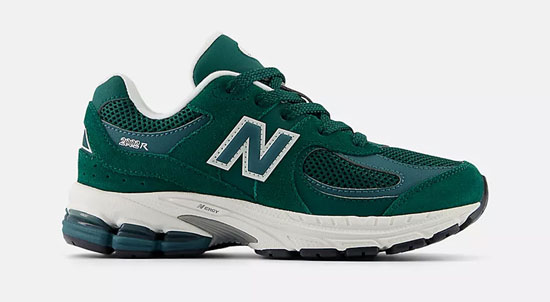
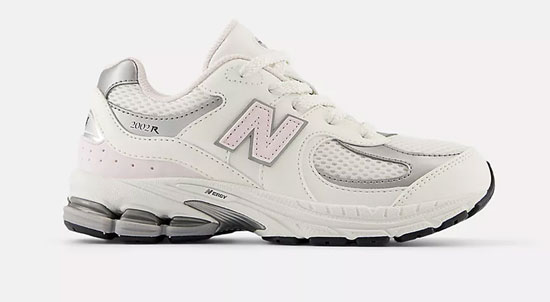
Key Features
- Order the shoe style 2002 by New Balance on the New Balance website
- Available in medium and wide widths
- Ideal for treating foot conditions such as flat feet, low muscle tone, toe-walking, and in-toeing
- I suggest getting this shoe a whole size larger than your toddler’s current foot size
Some families look for testimonials that mention similar foot issues and take note of how certain brands or models have made a difference. This firsthand insight could be just what you need to choose the sneakers that will support your toddler’s steps confidently and comfortably. However, what works well for some toddlers might not work as well for others, so please keep that in mind when relying on other families’ testimonials.
The Importance of Shoes that Fit Correctly – RESPECT the Fit
Many medical professionals get frustrated when they see toddlers wearing the correct pair of shoes but in the wrong size. It’s troubling how an ill-fitting shoe can negatively impact a toddler’s foot health. Tight footwear may hinder natural growth, while overly loose shoes can cause stumbling and inefficient gait patterns. I created a virtual shoe fitting service that will help you retrieve exactly what shoe size you should order online.
Contact Me for Additional Toddler Shoe Recommendations
Every child is unique, and their needs may vary. Without a doubt, your toddler shoe needs can vary depending on their foot shape, walking stage, and any specific foot conditions they may have. If you have any questions or need any further assistance, you can also contact me via email and I will get back to you as soon as possible.
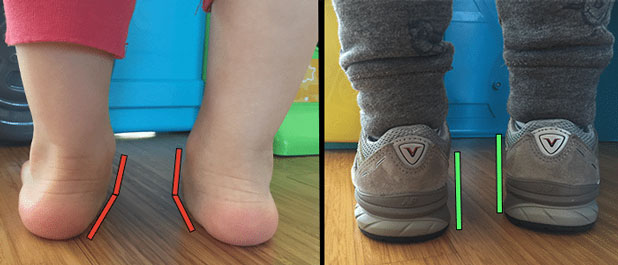
Shoes with Laces or Velcro Closure?
When choosing between Velcro and laces for your toddler’s sneakers, go with the option that keeps the shoes secure all day. Velcro is great for encouraging independence, allowing toddlers to put on and adjust their shoes on their own. However, lace-up shoes offer a more customized, snug fit—providing superior support and stability by better “hugging” the feet.
Worried Supportive Sneakers Might Weaken Your Toddler’s Feet?
Think of supportive sneakers as a form of preventive care that can help improve your toddler’s foot posture, walking gait, stability, and posture. I like to make the analogy that supportive sneakers are like glasses for your children’s feet. Will glasses fix your child’s eyes? No, but they will allow your child to see better and function normally. Supportive shoes are like glasses for your toddler’s feet. It isn’t about restricting their movement—far from it.
Watch My YouTube Video on Supportive Shoes for Toddlers
For more information on selecting the right shoes for your toddler, be sure to watch my YouTube video on supportive shoes for toddlers. In the video, I provide additional tips and insights to help you make the best choice for your child’s unique needs.
In certain cases, the support from sneakers might not be enough and your toddler might need an additional layer of support. That’s where orthotic insoles step in.
Should My Toddler Wear Orthotics?
Keep an eye on your toddler’s gait when they wear supportive shoes, and don’t hesitate to consult with a pediatric podiatrist if you’re uncertain. Their expert advice will take into account your child’s specific needs, ensuring they get the right level of support and correction.
In my experience, most toddlers don’t require custom orthotics. At the shoe store where I work, we’re certified to carry and fit children’s orthotics. If you think your toddler might benefit from orthotics, check out another resource I’ve created, where I dive into which orthotic insoles are ideal for toddlers with foot issues.
Common Signs that Your Toddler Might Have a Foot Problem
If you see persistent discomfort, uneven shoe wear, or your toddler keeps falling or being reluctant to walk, consult with your medical professional. Even without overt symptoms, a routine foot check-up can preempt future problems.
Frequent Tripping or Falling: Toddlers naturally trip and fall as they learn to walk, but frequent occurrences may indicate a problem. While occasional falls are typical, an excessive number of trips could suggest that your child’s shoes do not fit properly or lack the necessary support.
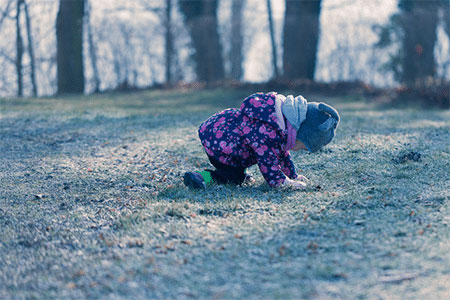
Uneven wear on shoes. Uneven wear on your child’s shoes can reveal much about their walking pattern and foot alignment. It may indicate that your child’s foot is rolling inward or outward excessively.

Inward or Outward Turning of the Feet. Inward or outward turning of the feet, known as in-toeing or out-toeing, is another indicator of potential foot problems. This can affect your child’s ability to walk straight and balance effectively.

Should I Buy Shoes with a Pediatric Podiatrist’s Seal of Approval?
This is not completely necessary. All of the sneakers I recommended have undergone rigorous testing to ensure they meet the needs of toddlers with specific foot problems, giving you an extra layer of assurance that you’re making a great choice for your child.
How Did Our Feet Survive Before Supportive Shoes Came Around?
Many families who are skeptical about supportive footwear often ask, “How did feet survive before all these high-tech shoes existed?” It’s a fair question—but just like advances in medicine and nutrition have improved our quality of life, innovations in footwear technology have allowed us to better support growing feet. Today’s shoes are designed with a deeper understanding of foot mechanics, making them far more effective at preventing and addressing common foot issues in children.
One final tip—always undo the Velcro straps or laces before putting your toddler’s shoes on or taking them off. It might seem like a small step, but it goes a long way in preserving the shoe’s shape, support, and overall durability, helping your child’s feet stay properly supported over time.
Pay close attention to how your toddler walks and check in often to ensure they’re moving comfortably and confidently. If you ever have questions or need quick guidance, feel free to reach out in the comments below—I’m here to help!

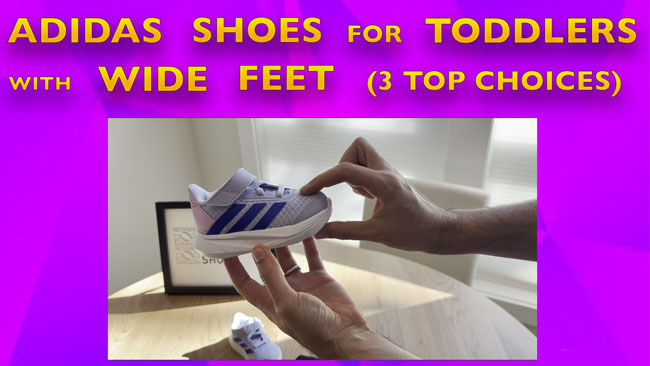
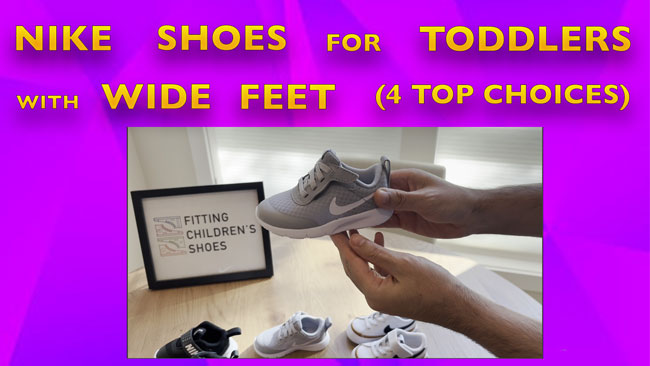
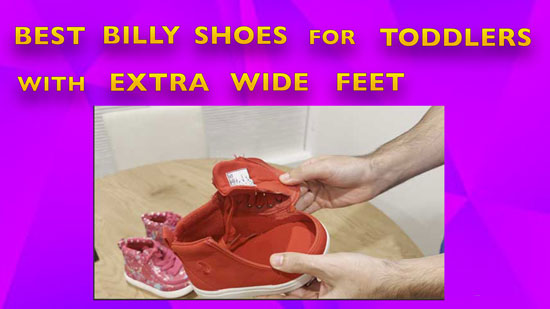
Thank you, Juan. The information you provided is very helpful.
I am happy to hear that you find the article informative!